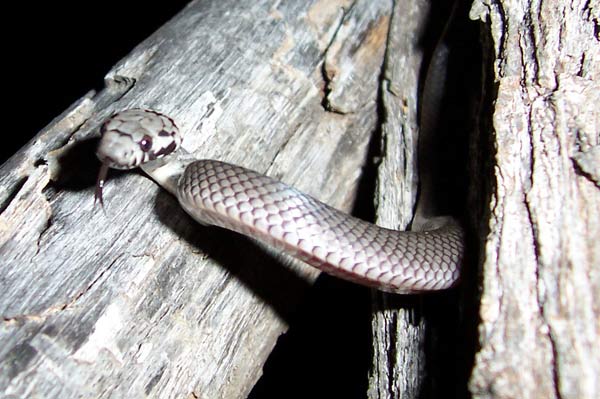Pale-headed Snake

(Holocephalus bitorquatus)
Other common names: None Known.
Significance to Humans: Potentially Dangerous
One serious case with severe symptoms has been reported, after bite by a larger specimen. Apply correct first aid and seek medical attention.
General description: Head relatively broad & distinct from neck. Normally grey to dark-grey with broad, pale grey or whitish band across back of head & neck, bordered behind with narrower dark or black band before body colour. Pale head area frequently has black blotches and lips may have black & pale bars. Belly pale grey. Midbody scales at 19-21 rows.
Average Length: 60-80cm.
Habitat in SE Qld: Wide range of habitats but generally forests, often near watercourses.
General habits: Good climber, partly arboreal. Shelters in tree hollows and under loose, peeling bark. Nocturnal, often foraging on rough-barked trees.
Diet: Mainly frogs, also lizards & small mammals.
Local distribution: Darling Downs & Toowoomba, Beaudesert, Esk & Brisbane Valley, Caboolture.
Around the home: The Pale-headed Snake is rarely associated with suburban environs but it may utilise structures in rural and urban settings in proximity to favoured habitat.
Photo Gallery
Please be patient while our image gallery loads. If viewing images in the lightbox viewer by clicking on an image, please allow a few second between each image as some images are large to retain their quality and size. Images are loaded straight from the cloud. If blank spaces appear in gallery please refresh your page or the refresh icon in the gallery header.
All image are the property of the website or respected owner and can not be re-used without permission. Copyright applies
